Ethiopia Trip Inspiration
Speak to a Ethiopia expert today
and start planning your tailor-made holiday

Alistair


In most large cities around the world, you’ll be hard pressed to not find at least a handful of Ethiopian restaurants, and rightly so. Ethiopian cuisine is unique and once you’ve tried it, it is an experience you’ll not soon forget. Vibrant flavours, unique combinations of ingredients and a zest for the flamboyant, Ethiopia offers a wonderful variety of traditional dishes to be enjoyed.
When you travel through Ethiopia you’ll certainly notice that the farmland throughout is very fertile so good quality, fresh produce is available almost everywhere, portions are generous and food is generally very cheap.
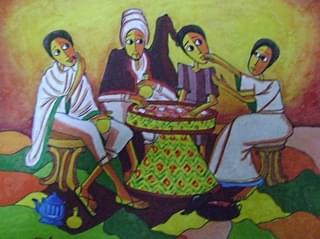
This is a country where hospitality reigns and enjoys a tradition known as “gursha,” which refers to feeding close friends and family a bite during the meal. Since food is generally eaten with the hands, this is a very intimate and loving gesture.
An important note for anyone visiting Ethiopia is the calendar of so-called “fasting days,” which are observed pretty religiously even in the capital, Addis Ababa. Lent is the main fasting time in Ethiopia but on Wednesdays and Fridays, almost everyone eats a vegan diet, so those aren’t the best days to find a succulent steak, unless the restaurant is heavily frequented by tourists. But who wants to dine at those places anyway?
For those with a slightly less adventurous palette, tourist hotels offer a variety of Western dishes - pasta and pizza are prevalent throughout the country thanks to the Italian colonial influence.
Below is a list of just some of the favoured local dishes you’re likely to come across whilst on a holiday to Ethiopia.
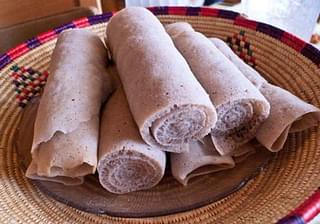
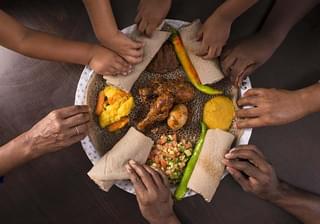
A ubiquitous sourdough flatbread/doughy pancake made from a nutritional grain called tef – a gluten free superfood and possibly one of the most ancient of grains. Everywhere you travel you will see injera being made and it is served with a variety of delicious, spicy and usually vegetarian accompaniments that diners scoop up using the injera. As the majority of Ethiopian food is eaten with your hands, injera is often used as a scoop or to mop up tasty sauces.

Ethiopia’s typical and most widely used spice blend. Its name derives from the chilli pepper which is prominent in all it’s regional and local incarnations. Everyone has their different recipe and variations are often highly guarded family secrets, usually containing a minimum of twelve ingredients and up to 25 – move over Colonel Sanders. A vast majority of the closely guarded recipes will commonly include; garlic, cardamom and fenugreek… to name just a few…
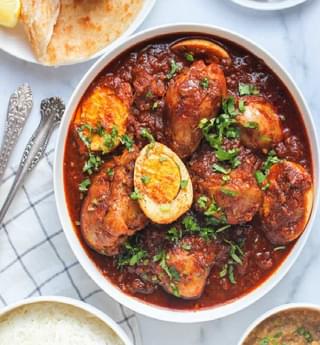
The Ethiopian National dish, their version of curry and the ubiquitous companion of injera. Siga wot is the name given to the dish when made with beef or goat, Doro is the name given when made with chicken (doro is chicken in Amharic) and reigns supreme as the wot champion. This spicy chicken stew, which is a deep red hue from the berbere is made with chicken drumsticks or wings cooked and served in a hot sauce of butter, onion, chilli, cardamom and berbere. In the middle of the stew a hard-boiled egg bobs inharmoniously – however it proves a delicious accompaniment and is typically offered to guests as a sign of respect.
For many Ethiopians, wot is the go-to meal of celebrations. During the day before national and religious festivals it’s not uncommon to see women everywhere carrying chickens upside-down by their feet, clucking absurdly (the chickens, not the women we may need to add).
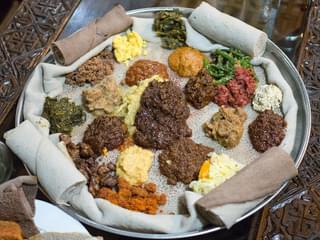
Ethiopia's most popular vegetarian dish translates as "a bit of every type," hence your injera arrives blanketed in piles of tasty and colourful vegetables, potatoes, curries, lentil stews and more, creating a riot of colours and tastes.
Due to Ethiopia's strong tradition of religious fasting and abstaining from meat on Wednesdays and Fridays, beyainatu can be found pretty much anywhere throughout the country, and because of its popularity is served just about everywhere from swanky hotels to small, family-run food shacks beside the road. So, when travelling around Ethiopia and faced with a menu printed only in Amharic and if your knowledge of the local language is a little rusty, 'beyainatu' is a safe and simple go-to. It is so popular that many visitors to Ethiopia return declaring it to be one of their new favourite meals.

Ethiopia’s ‘peasant dish’ - although one of the most unassuming dishes you’ll encounter but don’t be deceived it is very tasty and is enjoyed by all classes and is up there with the most popular dish in the country. This reddish, lightly spiced, saucy dish made from ground chickpeas and kibbe (a spiced clarified butter) is incredibly rich and delicious. And due to its popularity can be found pretty much everywhere with plenty of ‘hole-in-the-wall takeaways’ specializing in shiro throughout the capitol city.
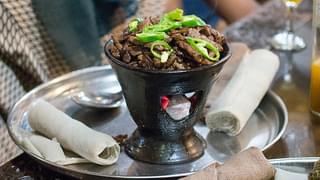
Historically, tibs was served to pay a complement or a sign of respect and is one of the most popular meat dishes amongst Ethiopians. Usually made from either beef, lamb or goat, with the meat flash-fried and served with onions, peppers, spices, garlic and lime juice – think of it as a stir fry-stew hybrid. It comes in a wide variety of shapes and forms with shekla tibs being particularly dramatic as strips of meat arrive at your table roasting atop of a clay pot stoked with hot coals – dramatic and delicious.
Tibs comes in a variety of spice levels, so for those chilli-heads out there, put your big boy pants on and ask for it ‘spicy’.
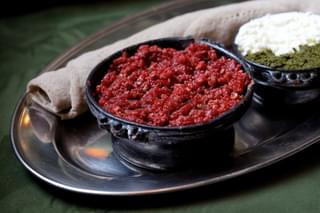
If you’re a fan of Tartare, this might just become your new favourite Ethiopian dish. Ground raw beef is mixed with kibbe, a spiced clarified butter, and accompanied by mitmita – a stronger version of berbere – and served with gomen (cooked greens) and ‘aib’ a soft, fresh cheese.
It is viewed as a big treat by most Ethiopians and one they are most proud of, with it being a popular choice when breaking the 55-day Easter fast.
Kitfo is typically served ‘leb leb’ – warmed, not cooked. Although if that doesn’t appeal, you can ask for it to be served ‘betam leb leb’ (“very warmed” – basically, cooked).
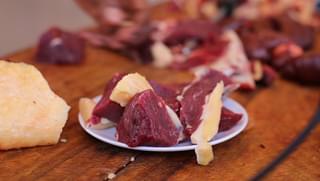
Not for vegetarians nor the faint-hearted, one of Ethiopia’s most popular delicacies is raw red meat. Typically a meal which is shared and eaten with injera to catch the meat as you carve it off the fresh raw slab, dipping both in copious amount of berbere and mitmita as you go.
One story of about how Ethiopians developed their love and taste for raw meat was through military tactics used during the 16th century, so soldiers could avoid detection by not having to start fires to cook their meat.
A word of warning; whilst most Ethiopians tend not to suffer any adverse effects from eating tere siga, with the majority proclaiming it to make them feel on top of the world, eating raw meat does carry health risks, ranging from tapeworm to salmonella.
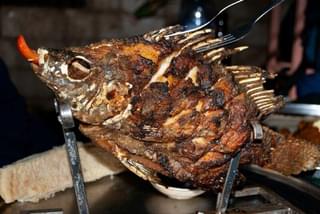
Eating fish in Ethiopia is quite the culinary experience. Typically, fish such as the delicious Nile perch is fried or deep fried and served in its entirety. As with the vast majority of dishes in Ethiopia it is eaten by hand or injera and accompanied with berbere to dip in. Barring a few bones everything is eaten with the crispy grilled fins being a particular favourite amongst Ethiopians.
If that doesn’t appeal, Asa tibs is widely available. Chunks of fish are marinated in berbere and lime juice and then fried along with garlic, paprika and ginger. It’s a good option if you don’t want the irritation of picking through bones or having to guiltily look at the fish’s angry looking face.
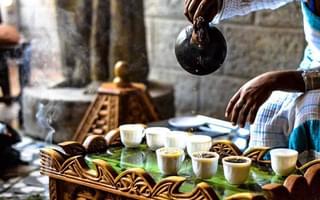
Ethiopians are super-proud of their coffee and lay claim to being the birthplace of one of the world’s most popular beverages. Domestically they grow hundreds of varieties with the majority of coffee in Ethiopia is still wild-grown and harvested on a very small scale. If you need a good espresso to start your day, you’ll have no problems finding them all over Addis Ababa.
The story of how coffee was first discovered was a goat herder who noticed the energising effects certain plants had after his goats had been feeding on them and so decided to try it for himself. Coffee is also a huge part of Ethiopian culture and the coffee ceremony can be enjoyed at almost all hotels to learn about the importance it plays in day-to-day life.
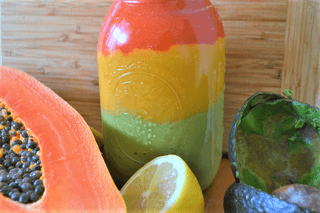
Ever tried avocado juice? If you decide to frequent on of Ethiopia’s juice shacks, you’ll more than likely be tempted to try it. Long before ‘juicing’ became popular, Ethiopians have bene drinking fresh juices for a very, very long time - usually as a snack between meals and served with a small wedge of sweetened bread.
Spriss, is typically made by pouring layers of juice from three fruits on top of each other. Generally, no sugar, water or ice is added (however if the latter two are, make sure the water has been boiled first) – which makes this treat an unadulterated fruit juice and puree delight, sometimes topped with a squeeze of lime. One of the more popular combinations is the tri-coloured; avocado, mango and orange or pineapple. A welcome, refreshing and sweet break from a sometimes heavily spiced diet.
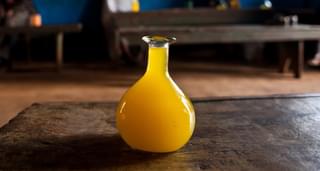
An alcoholic beverage made from smoky, earthy unprocessed honey, which you would most likely compare to a sweet aperitif. It’s vibrant yellow colour comes in part from the addition of gesho a type of buckthorn which is native to Ethiopia and lends a slightly hoppy quality to the almost orange-esque taste.
Ethiopians love its sweet, potent taste so much it is their national drink (besides coffee of course). Most will tell you that the best tej is found in areas of Ethiopia where the highest-quality honey is produced, usually in the northern regions of Ethiopia. This yellow and fragrant drink is typically served in what almost resembles a laboratory beaker.
Be warned, tej is sneaky. If you’re not careful, it’s more than possible to throw back a few ‘beakers’ before it hits you all at once, giving you a wobbly surprise.
When travelling through Ethiopia there are many restaurants to choose from in each town, all offering an excellent dining experience, but a couple of our stand-our favourites are:

A curious building perched at the high point of the town overlooking the valley below, Ben Abeba is an Ethiopian-Scottish husband and wife collaboration. Alongside traditional local dishes expect comfort food of shepherds pie and casseroles.
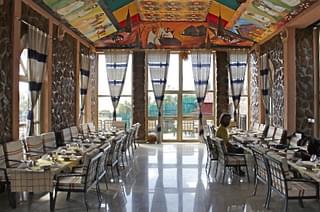
Named for the four friendly siblings who run the restaurant, this really is a Gondar institution, catering unashamedly for the tourist trade, but with excellent local food and a warm ambience. Most evenings see a traditional Amharic music and dance performance as well.
Food is such an important part of every journey; it helps you to experience local culture and heritage. Next time you are on holiday in places far and wild, make sure you try at least one local delicacy – you may be surprised.
Wondering when you visit Ethiopia? Take a look at our guide on the best time to visit Ethiopia.
Looking for some more inspiration? Take a look at our best safari holidays ideas, our favourite family safaris, our big five safari guide or our top African safari honeymoon suggestions.
Call us today to find out more or email us at [email protected]
and start planning your tailor-made holiday

